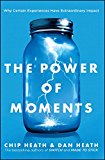I’m reading a new book, and it’s pretty amazing. The Power of Moments tells stories and gives examples of how to create amazing moments of value for employees, students, families, etc. Two of the principles from the book can be leveraged for employee reviews and I want to focus on them today.
Assurance + Expectations > Feedback
The first concept is called Assurance + Expectations. Researchers performed a study on students that received graded feedback on their work.
- In the first group, students received a generic “these comments are feedback.”
- In the second group, students received “I’m giving you this feedback because I have high expectations and know you can do better.”
After receiving the feedback the students had the opportunity to edit and resubmit their work. A much larger portion of group two resubmitted their work for review. But why?
The concept comes down to Assurance + Expectations. If we provide assurance and give a set of expectations, we can empower individuals to perform at a higher level, provide greater depth, and make the transaction much more of a positive experience. Those individuals in group one didn’t get any positive reinforcement, insight into expectations, etc.
Within the performance process, it’s not enough just to give someone a piece of feedback and move on, especially when it’s critical. We need to provide critical feedback in the context of assurance (you can do great work) and expectations (I expect you to do great work). That relatively minor change shifts the whole context of the conversation from punishing someone for messing up to helping them discover how they can improve.
Backward Integrated Design
The second concept that applies to the performance management process is backward integrated design. This basically means backing out the design process and starting with the outcomes you hope to achieve. For example, many would say the ideal outcome of performance appraisals would be to help employees perform better. But when we look at how they are structured (especially when done once or twice a year), that simply can’t be the case, because we spend our time measuring their old performance, rating it, telling them what they did right or wrong, etc.
Instead we need to think about what actually creates better performance:
- Recognition
- Coaching
- Feedback
By incorporating these elements into the process we can actually improve our chances of hitting the overarching goal of improving employee performance. Our research shows that high-performing companies are much more likely than low performers to use these and other elements in the performance process. You can check out the rest of our findings on the Lighthouse Research website if you’re interested.

